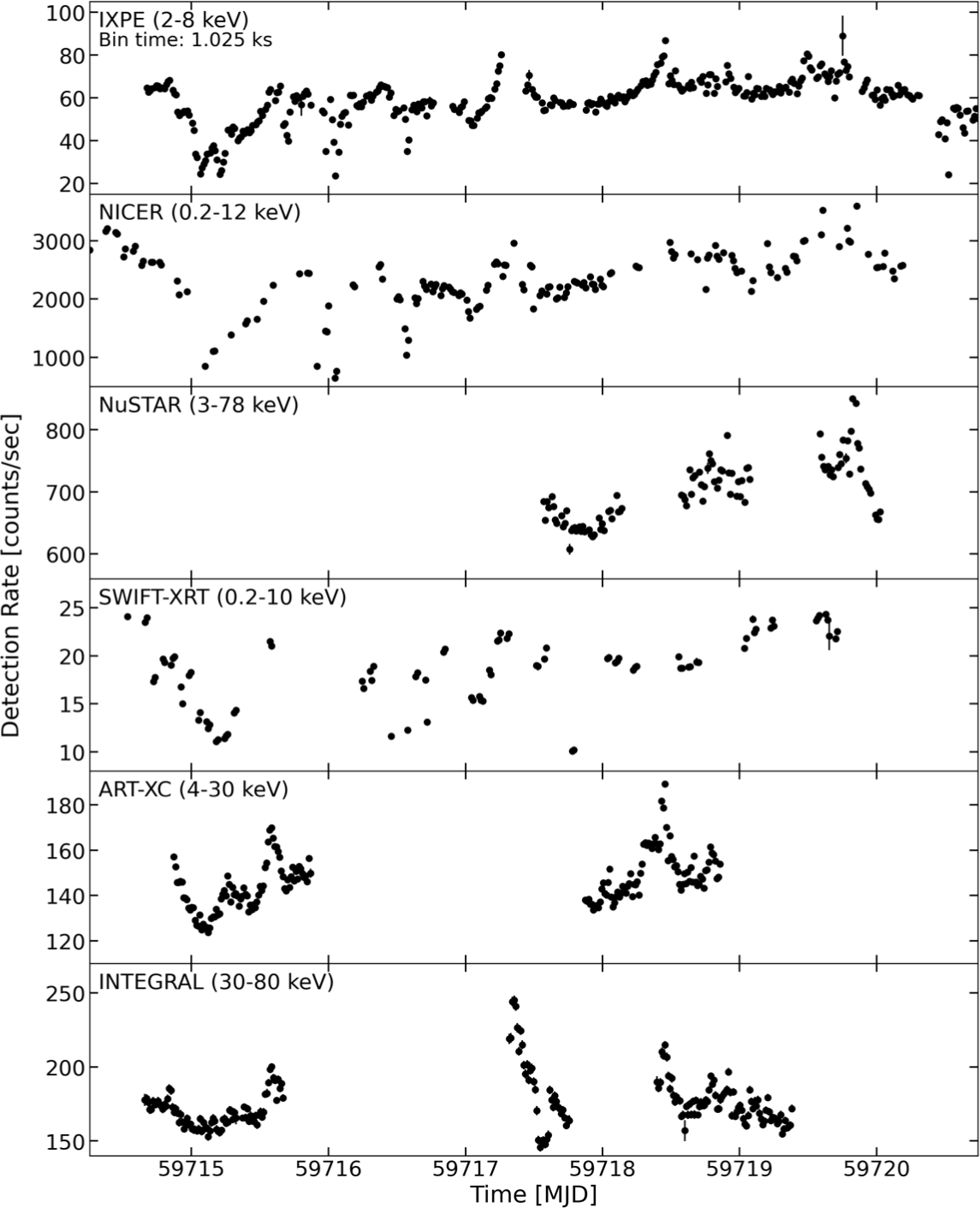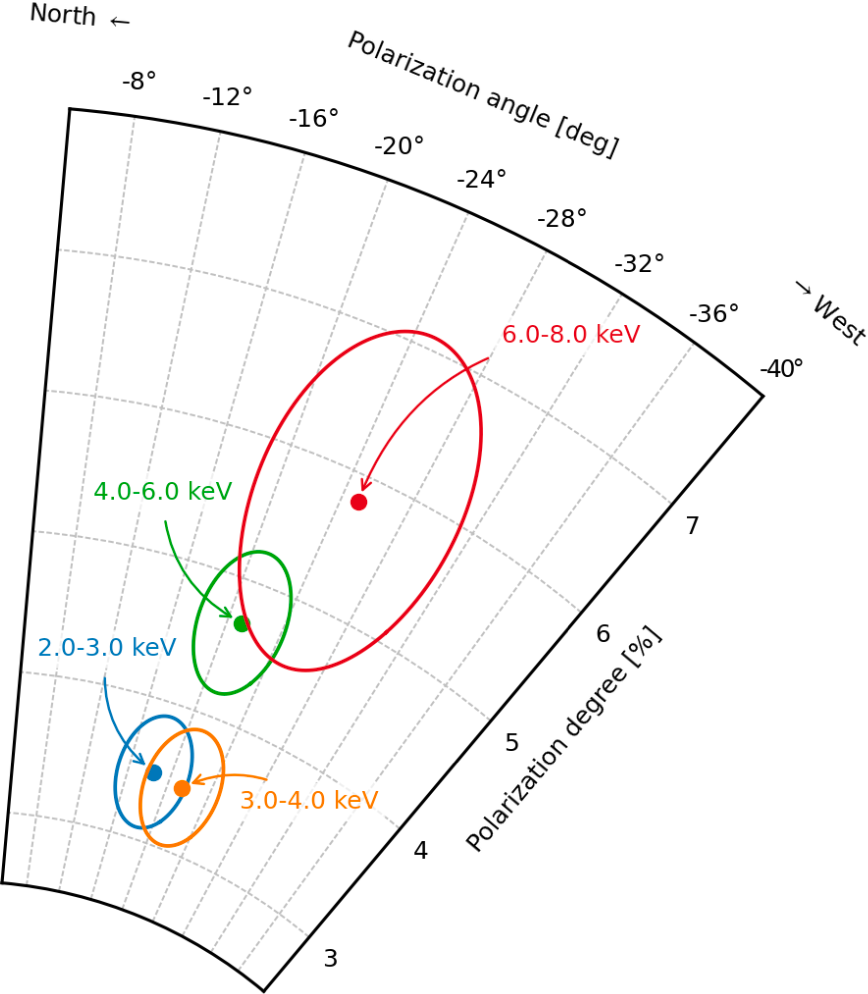NICER / ISS Science Nugget
for November 3, 2022
NICER assists on first X-ray polarization measurement of a black-hole binary
Light across the electromagnetic spectrum can be polarized. In linearly polarized light, the electric and magnetic field vectors maintain a constant direction as the light wave propagates through space. Thus, polarized light offers an opportunity to probe the geometry of the light-emitting region and the physical processes at play in a unique way. Within the X-ray band, these regions and processes involve extremely high-temperature plasmas around neutron stars and black holes. NASA's Imaging X-ray Polarimetry Explorer (IXPE), launched nearly one year ago, is the first orbiting telescope capable of measuring the polarization properties of cosmic X-ray sources.
In coordination with multiple NASA and international facilities, including NICER, IXPE recently observed the well-known high-mass binary Cygnus X-1, a system believed to contain a 21 solar-mass black hole in a 5.6-day orbit with a 40 solar-mass companion star. The supporting observations across the soft (e.g., NICER) and hard (e.g., NuSTAR) X-ray bands provided spectroscopic data that enabled IXPE to disentangle competing sources of polarized emission -- such as from the accretion disk of material flowing into the black hole vs. the "corona" of hot plasma -- as the source varied by more than a factor of 3 in brightness during the observing campaign. IXPE's detection of polarized light from Cyg X-1 marks the first such measurement from any black hole. The electric field vector in the polarized X-rays is found to be aligned with the direction of jets seen in radio observations, supporting jet models that place their origin in the inner accretion flow, while the joint spectral-polarization analysis facilitated by NICER data reveals that the coronal plasma is aligned with the plane of the accretion disk and not the jet axis, a new insight into the geometry of this mysterious hot gas.
These findings from IXPE and supporting observations were published today in the prestigious journal Science by H. Krawczynski (Washington U.), and were the subject of a NASA media release.


Figure:
Left: X-ray brightness variations of the black-hole binary Cygnus X-1, as recorded in contemporaneous observations by (top to bottom) NASA's IXPE, NICER, NuSTAR, and Swift missions, the Russian-German Spektrum-RG observatory, and ESA's INTEGRAL telescope.
Right: Photon energy dependence of the X-ray polarization properties of Cyg X-1, as measured by IXPE. Ellipses denote one-sigma uncertainty regions in polarization angle and the percentage (degree) of received light that is linearly polarized.
<< Previous
Main Index
Next >>